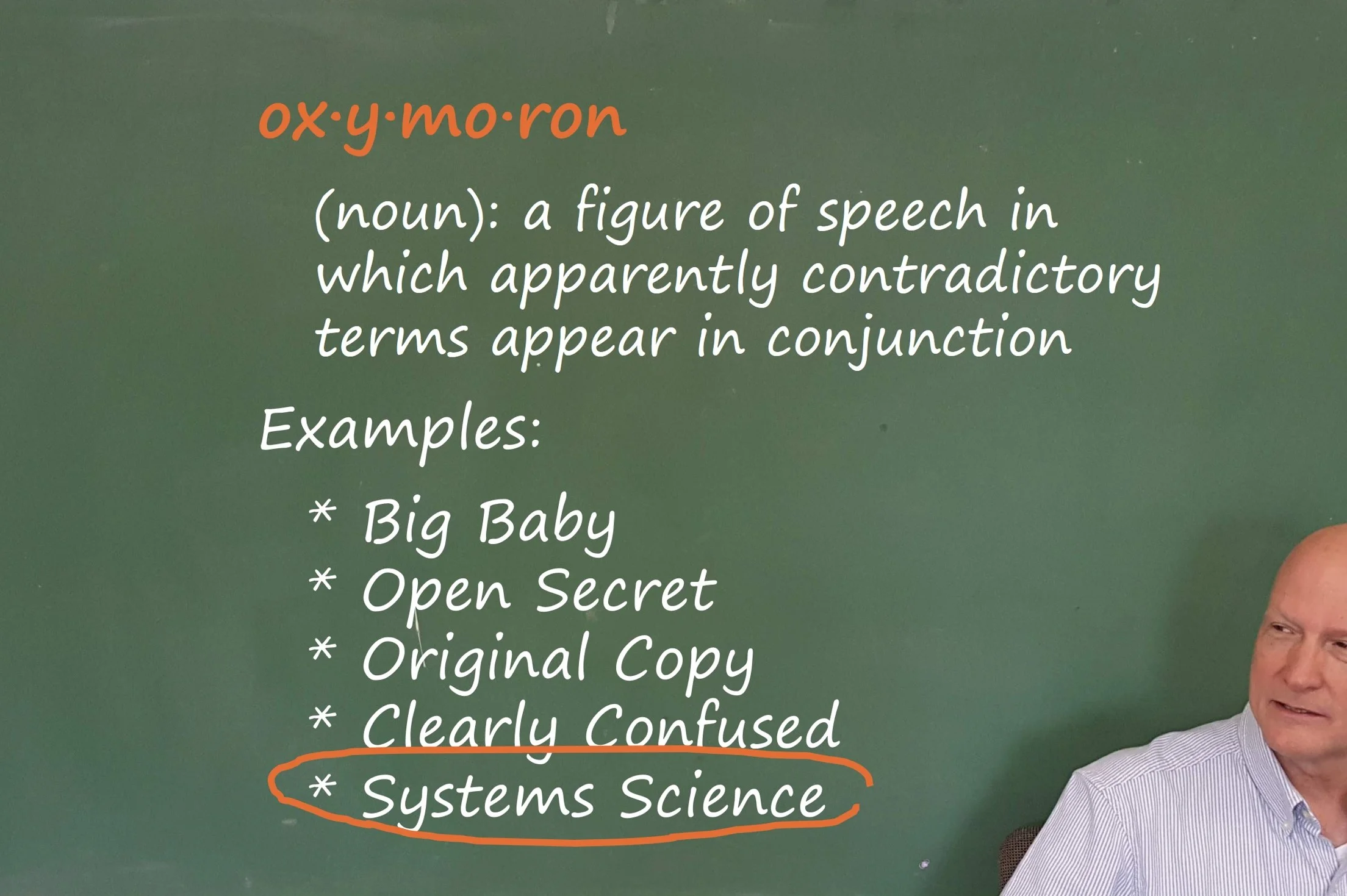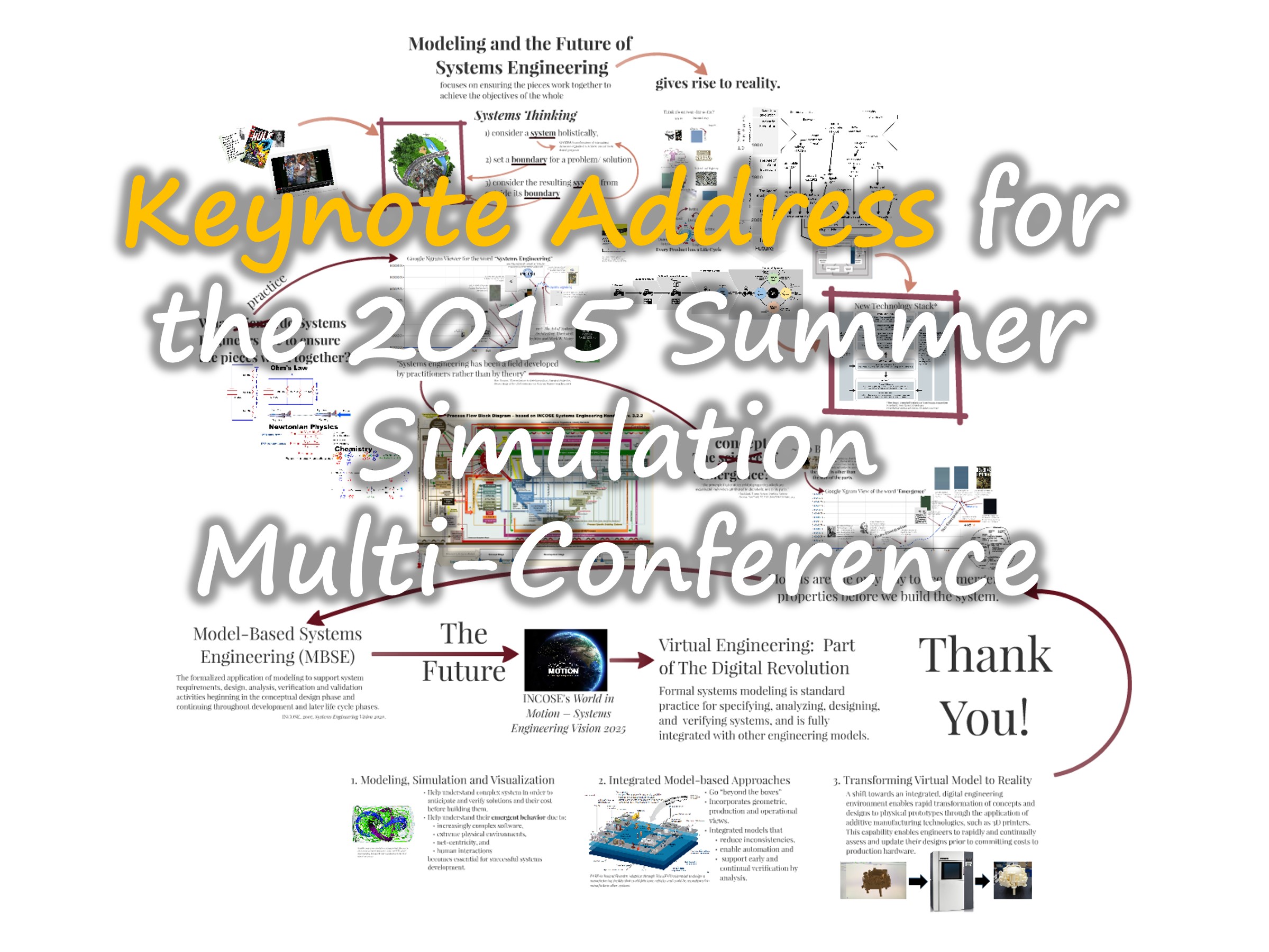I have a standard rant that I give to my students during my graduate SE course at UMBC. It goes something like this:
“Every engineering discipline has its science — Electrical Engineering has its Ohm’s law — Mechanical Engineering has all of Newtonian Physics — Civil Engineering has Material Science — Chemical Engineering has its periodic table of elements — and so on and so forth. But what about Systems Engineering? Where is our science?”
Then I go on to explain how science can investigate and explain the parts of a system but not the emergent properties of a completed system. Emergence is a mystery to scientists. How do systems exhibit properties that will only manifest when components interact with one another? System-level properties that are different than the individual component level properties? These system-level properties cannot be predicted.
Prediction is the main concern of Science. It is all about discovering laws of the universe that can be predicted. These laws are then applied by Engineers so that a new technology can be created to meet mankind's needs. Scientists find knowledge, Engineers uses that knowledge to create or change the world we live in.
But here’s the thing. There is no science to explain ‘emergence’. It just is. And yet ‘emergence’ is a chief concern for a Systems Engineer. Even the INCOSE Systems Engineering Handbook Version 4.0 states:
“Emergence is the principle that whole entities exhibit properties, which are meaningful only when attributed to the whole, not to its parts. … System elements interact between themselves and can create desirable or undesirable phenomena called “emergent properties,” such as inhibition, interference, resonance, or reinforcement of any property. Definition of the architecture of the system includes an analysis of interactions between system elements in order to prevent undesirable properties and reinforce desirable ones. The notion of emergent property is used during architecture and design to highlight necessary derived functions and internal physical or environmental constraints.”
But how can this “analysis of interactions between system elements” occur when you have no science to back you up. But you may ask — Don’t we have “Systems Science?” Sure but “Systems Science” can not help us when it comes to ‘emergence’. Again a quote from the INCOSE Systems Engineering Handbook:
“Research in systems science attempts to compensate for the inherent limitations of classical science, most notably the lack of ways to deal with emergence. Systems science has developed — and continues to develop — hand in hand with practice, each maturing and learning from the other.”
So if we don’t have a science, what do we do then? Well, we model. And that’s why Model-Based Systems Engineering is a critical concern within our profession. That’s why the INCOSE SE Vision document, A World in Motion, Systems Engineering Vision 2025, states that:
- “Model-based approaches will enable understanding of complex system behavior much earlier in the product life cycle.
- Model-based visualization will allow seamless navigation among related viewpoints such as system, subsystem, component, as well as production and logistics.
- Models will be used not only to capture design but to embody design rationale by linking design to top-level customer and programmatic concerns
- On so on and so forth”
So Systems Engineering lacks a science. It’s OK, we have our best practices and it works. That why, when you look at the definition of Systems Engineering from the INCOSE Systems Engineering Handbook:
“Systems engineering is an interdisciplinary approach and means to enable the realization of successful systems.”
— notice that word: successful. Rest assured, we are in a profession that produces successful systems.












